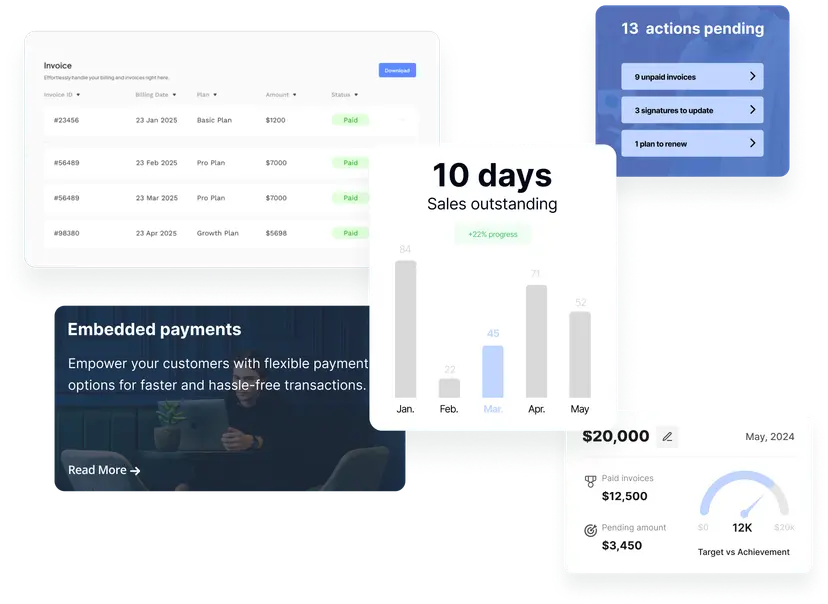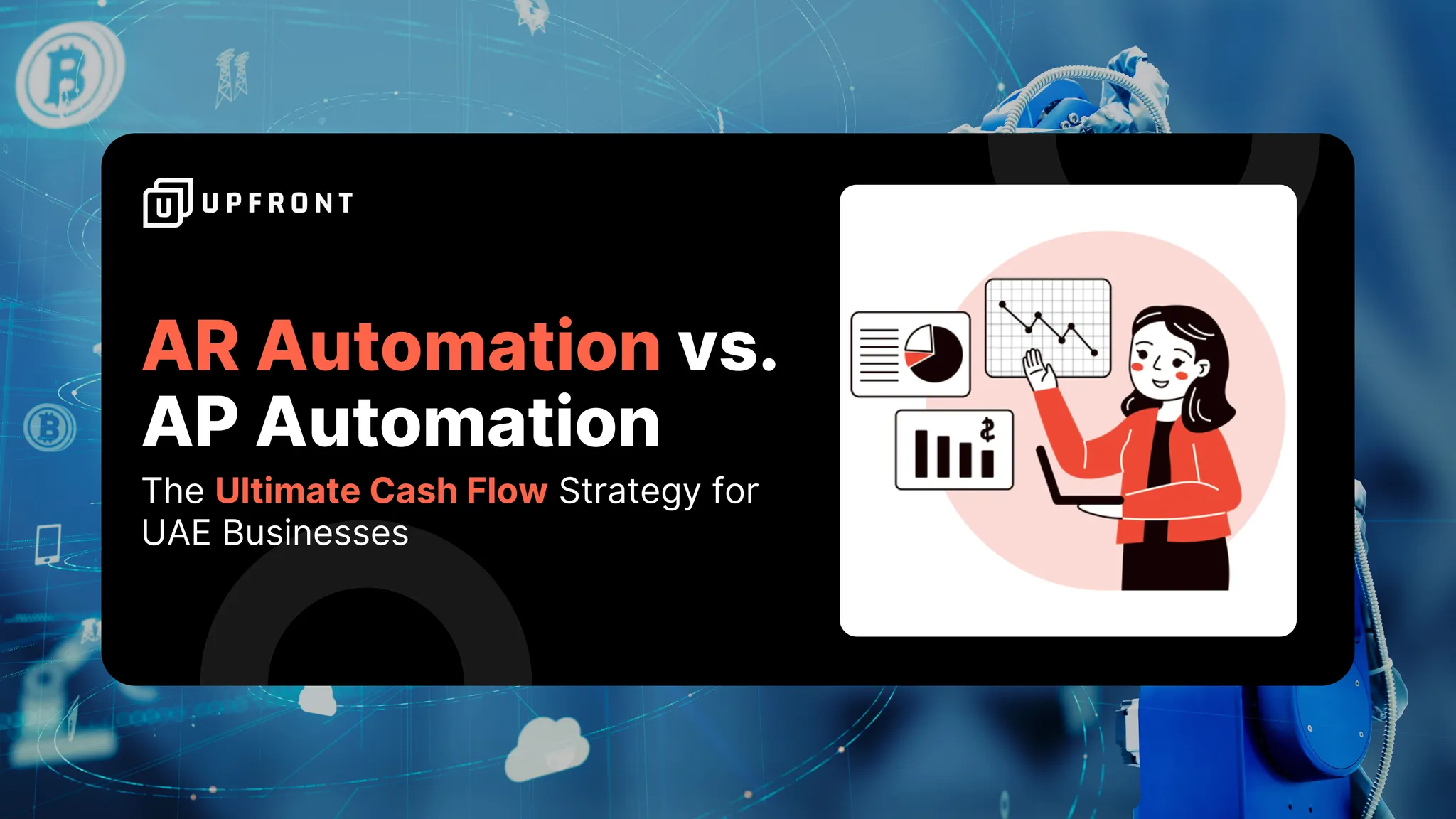The Future of Accounts Receivable Automation: Trends, Technologies, and Tools
Accounts receivable (AR) automation is transforming the way businesses manage their finances. Gone are the days of tedious manual processes that cause delays, errors, and inefficiencies. Today, businesses are leveraging cutting-edge technologies like artificial intelligence (AI), blockchain, and real-time payments to streamline their AR processes, reduce Days Sales Outstanding (DSO), and improve cash flow. This article delves into the latest trends, technologies, and best practices in AR automation, highlighting key tools and techniques for businesses aiming to stay competitive in 2025 and beyond.
What is Accounts Receivable Automation and How Does It Work?
Accounts receivable automation refers to using software and technology to handle invoicing, payment tracking, and reconciliation tasks that were traditionally performed manually. By implementing AR automation tools, businesses can eliminate common issues like delayed payments, human errors, and outdated processes, resulting in faster and more accurate collections.
At the heart of AR automation is AI, which enhances workflow efficiency and enables predictive analytics to forecast payment behaviors. Additionally, blockchain technology can ensure secure, transparent transactions, while real-time payments enable businesses to accelerate their cash flow. These technologies help reduce the burden on finance teams, allowing them to focus on more strategic tasks.
How is AI Used in Automating Accounts Receivable?
AI-driven AR automation tools, such as Upfront, use machine learning to analyze historical payment data, predicting future payment trends and enabling businesses to act proactively. Key AI features in AR automation include:
-
Predictive Analytics: AI analyzes payment patterns, predicting potential delays, which allows businesses to address issues before they become problems.
-
Automated Workflows: AI can automate repetitive tasks such as invoice generation and payment reminders, saving time and reducing manual errors.
-
Custom Solutions: AI tailors AR processes to fit industry-specific needs, improving cash flow and reducing risk.
By leveraging AI, businesses can significantly enhance the accuracy and speed of their AR operations.
Blockchain in AR: Enhancing Security and Transparency
Blockchain is another game-changer in AR automation. Blockchain technology records transactions in a decentralized, tamper-proof ledger, offering unmatched security and transparency. Benefits of integrating blockchain in AR automation include:
-
Fraud Prevention: Blockchain ensures that transactions are securely recorded and cannot be altered, reducing the risk of fraud.
-
Smart Contracts: These automated contracts execute payment terms automatically once conditions are met, reducing the need for manual intervention and speeding up the process.
-
Seamless Audits: Blockchain provides an easy-to-access and transparent record of transactions, simplifying the audit process and ensuring compliance.
Incorporating blockchain into AR automation enhances data security and trust, particularly for industries where transparency is critical.
Real-Time Payments in AR: Accelerating Cash Flow
Real-time payments are rapidly gaining traction as a vital component of AR automation. Unlike traditional batch processing, which can take days to settle, real-time payments allow businesses to receive payments instantly, improving cash flow and reducing DSO. Key advantages of real-time payments include:
-
Faster Settlements: Instant payments enable businesses to access funds immediately, ensuring liquidity and reducing the risk of cash shortages.
-
Improved Customer Experience: Real-time payments provide customers with flexible, efficient payment options, leading to higher satisfaction and repeat business.
-
Global Reach: With real-time payments, businesses can easily process cross-border transactions, expanding their ability to serve international markets.
Integrating real-time payments into your AR system is a game-changer for businesses that prioritize cash flow and customer experience.
AR Automation ROI by Technology: AI vs. Blockchain vs. Real-Time Payments
Each technology has its own strengths and ideal use cases when it comes to AR automation. Let’s compare AI, blockchain, and real-time payments in terms of their potential ROI:
-
AI: By improving predictive analytics and automating repetitive tasks, AI can significantly reduce operational costs and speed up the AR process. Its ability to forecast payment delays and optimize workflows directly translates to lower DSO and improved cash flow.
-
Blockchain: The ROI of blockchain in AR automation comes from its enhanced security and fraud prevention. While implementation costs can be high, blockchain’s ability to ensure transparent and tamper-proof transactions provides a solid return on investment, especially in regulated industries.
-
Real-Time Payments: The ROI from real-time payments comes in the form of faster access to funds, improved cash flow, and enhanced customer satisfaction. While the infrastructure for real-time payments may require an initial investment, the long-term benefits outweigh the costs.
| Feature | AI Automation | Blockchain | Real-Time Payments |
|---|---|---|---|
| Speed | Predictive (Pre-delay) | Secure but slower | Instant (<5 sec) |
| Security | Fraud detection | Immutable records | Encrypted transfers |
| Best For | Forecasting & CRM | Audits & compliance | Liquidity management |
| GetUpfront Use Case | AI-driven dunning | Smart contract invoicing | Direct bank integrations |
Each technology offers unique advantages, and the best AR automation solution depends on your business’s specific needs.
Predictive AR Analytics vs. Traditional Reporting
Traditional AR reporting typically focuses on historical data and past payment patterns. While this approach can provide valuable insights, it doesn’t always offer the foresight needed to optimize cash flow. Predictive AR analytics, on the other hand, uses AI to forecast future payment behaviors and trends. This forward-looking approach enables businesses to act proactively, ensuring that they are prepared for potential payment delays and optimizing collection strategies.
Predictive analytics can be integrated into AR automation tools to provide real-time insights, helping finance teams manage risk and improve cash flow.
How AR Automation Helps Reduce DSO (Days Sales Outstanding)
One of the most significant benefits of AR automation is the reduction in DSO. By automating tasks such as invoicing, payment reminders, and collections, businesses can ensure that payments are processed more quickly and efficiently. Real-time payments and AI-powered analytics further accelerate this process, reducing the time it takes to collect outstanding invoices and improving cash flow.
AR Automation Tools & Software: The Best for 2025As we move towards 2025, the need for effective AR automation tools is more pressing than ever. Businesses should look for software that incorporates AI, blockchain, real-time payment capabilities, and predictive analytics. Some of the best AR automation software solutions for 2025 include Upfront, which offers a comprehensive suite of features designed to enhance efficiency and boost cash flow.
Streamline Your AR with AI & Blockchain
GetUpfront’s **AR automation software** combines AI, blockchain, and real-time payments to cut processing time by 70%.
Book a Free Demo →FAQs – The Future of AR Automation: AI, Blockchain & Real-Time Payments
1. What is the future of AR automation in finance and business?
The future of AR automation involves AI-driven intelligent processing, blockchain-secured transactions, and real-time payment systems. These innovations reduce manual work, eliminate errors, and enable instant invoicing and payments, improving cash flow and working capital management for businesses globally.
2. How will AI transform AR automation trends in the next 5 years?
AI is central to upcoming AR automation trends, bringing predictive analytics, dynamic risk scoring, and autonomous receivables management. AI-powered AR systems can forecast payment delays, optimize collection strategies, and reduce DSO, making AR departments proactive and data-driven.
3. What is the role of blockchain in AR automation processes?
Blockchain in AR automation ensures secure, immutable records and enables smart contracts for automatic payment execution upon invoice validation. This reduces disputes, improves transparency, and builds trust between businesses and customers, especially in global or cross-border AR workflows.
4. Why are real-time payments important for AR automation success?
Real-time payments AR automation allows instant settlement of invoices, enhancing liquidity and reducing cash flow gaps. Companies adopting real-time payments in AR processes benefit from faster fund availability, improved supplier relationships, and reduced operational risk.
5. What technologies will drive future AR automation systems?
The next generation of future AR automation systems will integrate:
- AI for intelligent AR process automation
- Blockchain in AR automation for secure data handling
- Real-time payments AR automation for instant transactions
- Embedded finance and API-driven payment ecosystems for seamless AR/AP alignment.
What is accounts receivable automation software, and how does it work?
Accounts receivable automation software streamlines the invoicing, payment tracking, and reconciliation processes, using technologies like AI and blockchain to enhance accuracy, reduce errors, and speed up collections.
What are the benefits of using AI in AR automation?
AI enhances AR automation by providing predictive analytics, automating repetitive tasks, and improving cash flow management. It helps businesses anticipate payment delays, optimize workflows, and reduce manual errors.
How does blockchain improve security in AR?
Blockchain offers secure, transparent, and tamper-proof transaction records, making it ideal for industries that require high levels of security. It also simplifies the audit process and reduces fraud risk.
How do real-time payments reduce DSO?
Real-time payments enable businesses to receive funds instantly, reducing DSO by eliminating delays associated with traditional batch processing. This improves cash flow and enhances liquidity.
What are the top AR automation tools for 2025?
The best AR automation tools for 2025 integrate AI, blockchain, real-time payments, and predictive analytics. Upfront is a leading example of a platform that offers these features to streamline AR processes and boost financial efficiency.
Final Takeaway:
As businesses look to the future of AR automation, adopting technologies like AI, blockchain, and real-time payments will be essential for staying competitive. By leveraging these tools, companies can reduce DSO, improve cash flow, and create a more efficient, secure AR process. The right AR automation platform—such as Upfront—can make all the difference in ensuring your business thrives in a rapidly evolving financial landscape.
→Decision advantage: AR Reporting Analytics→Operational agility: Streamlined Operations Automation→ Productivity science: Automation Boosts Productivity→Funding options: Invoice Financing vs Discounting UAE






